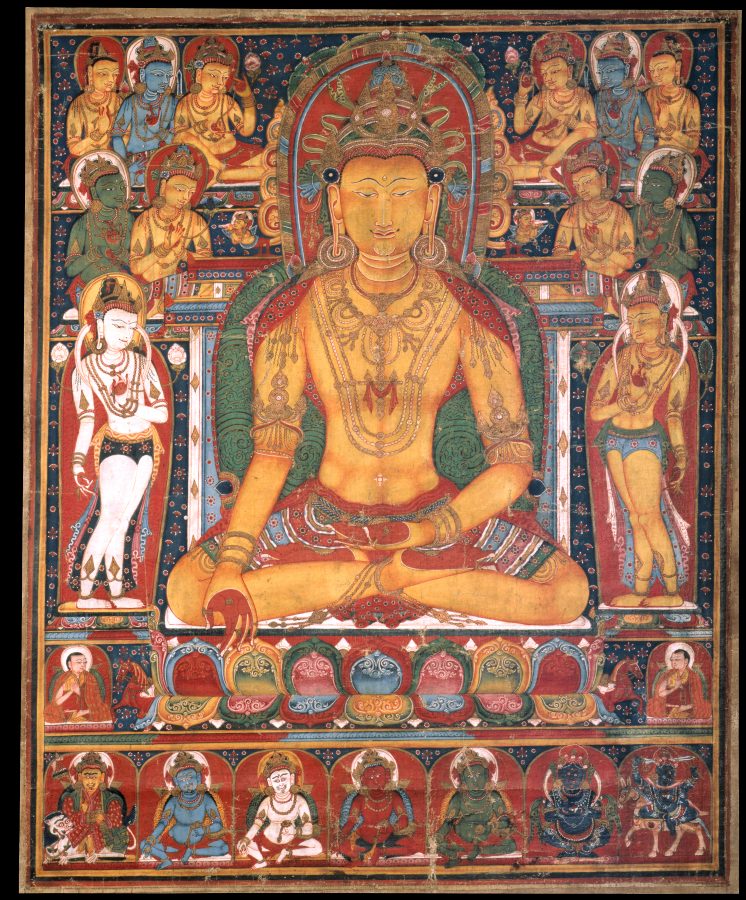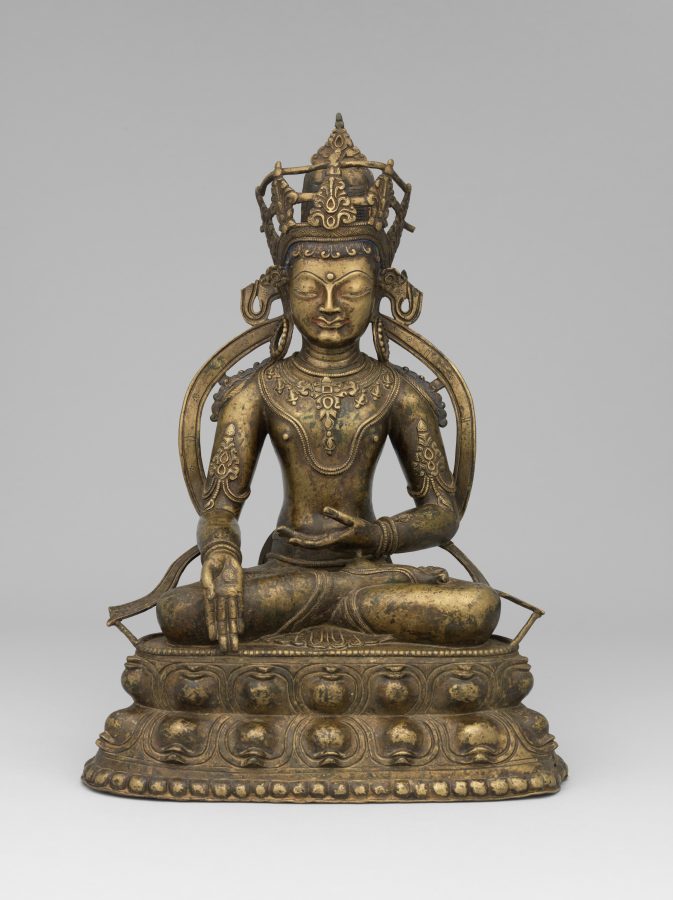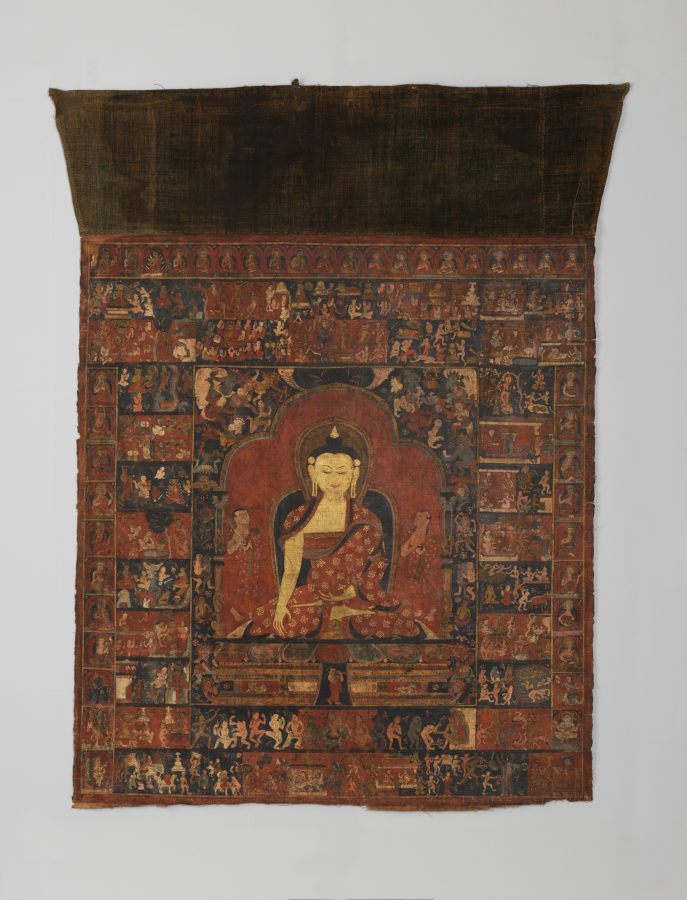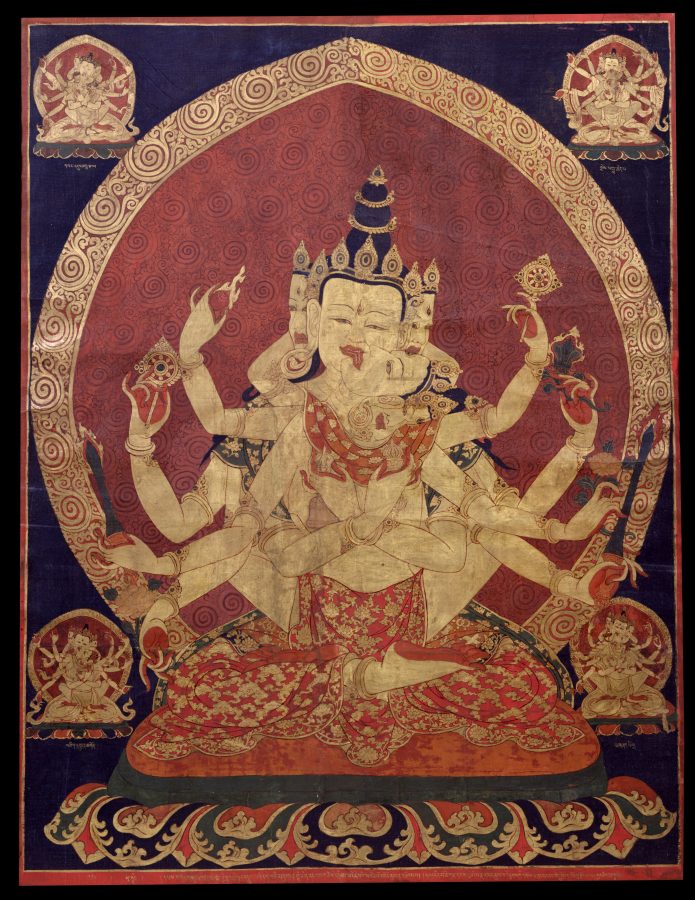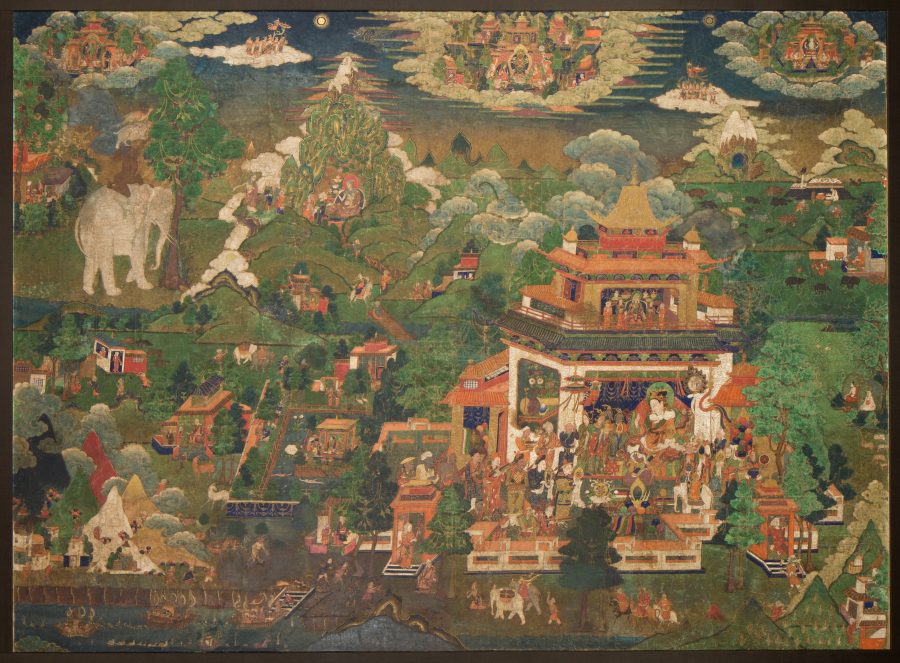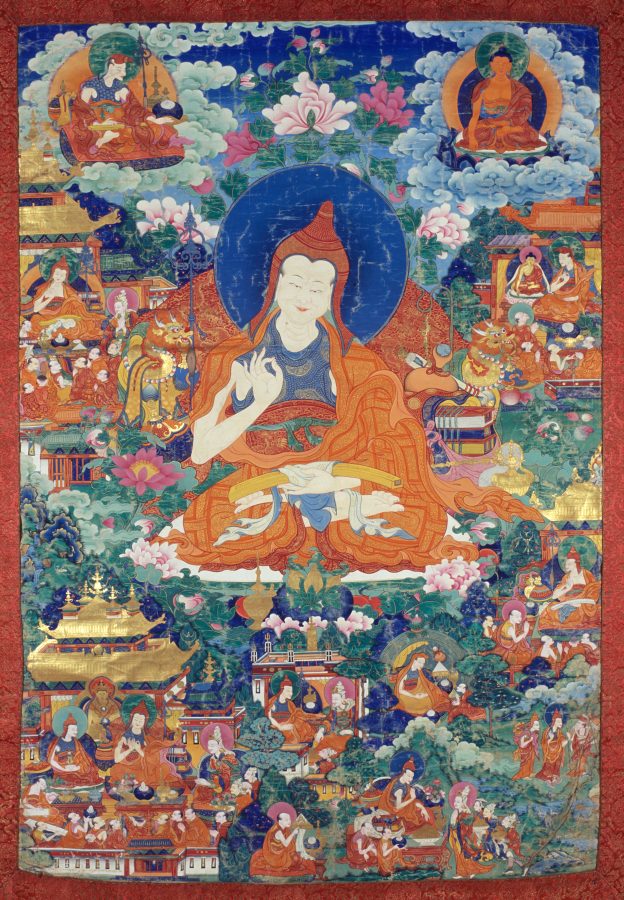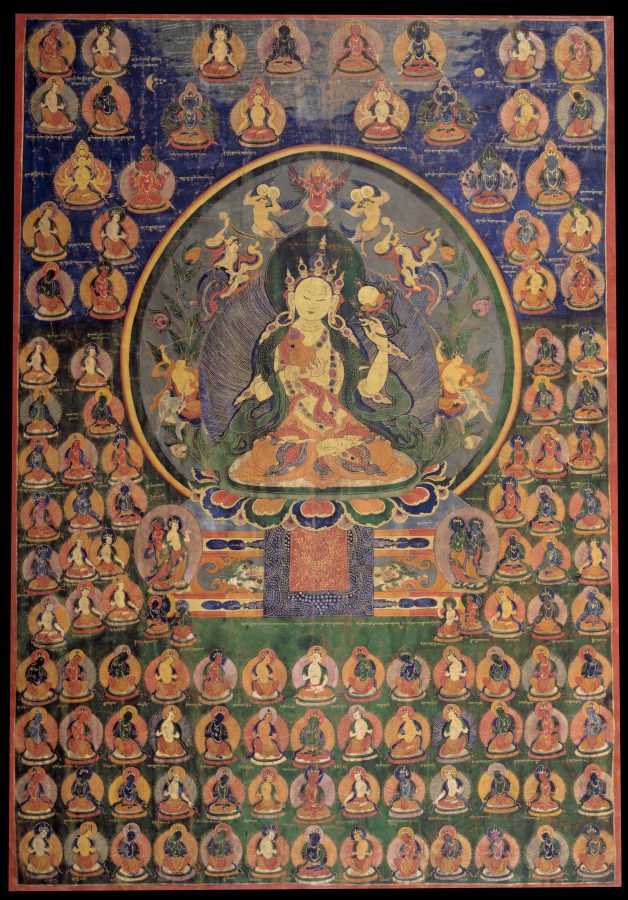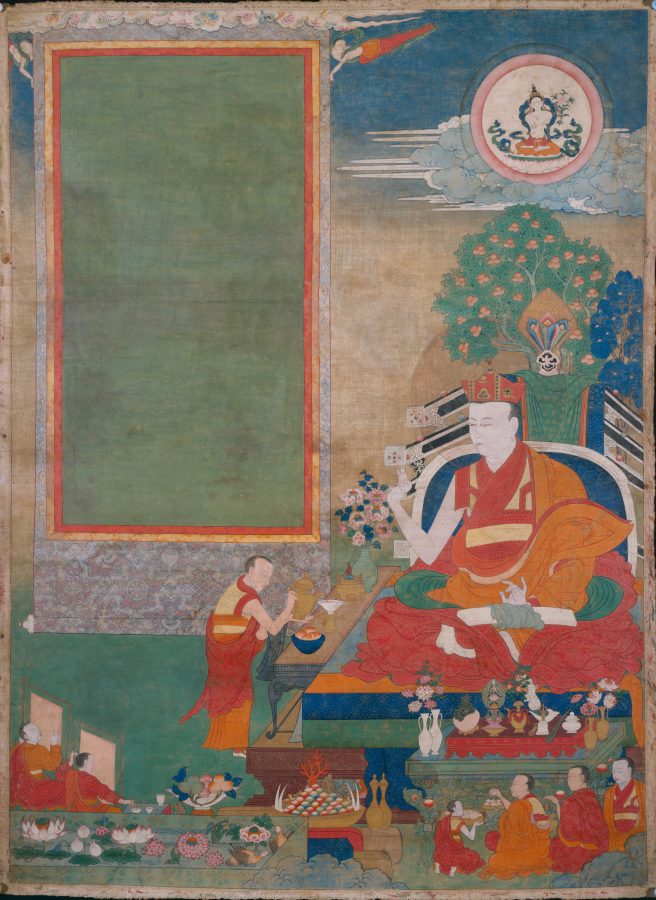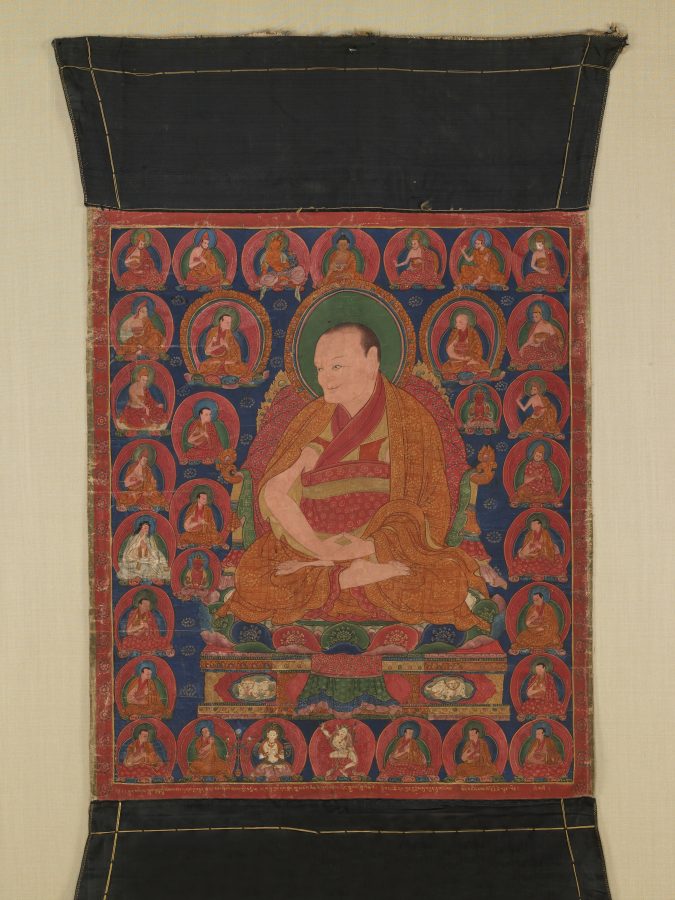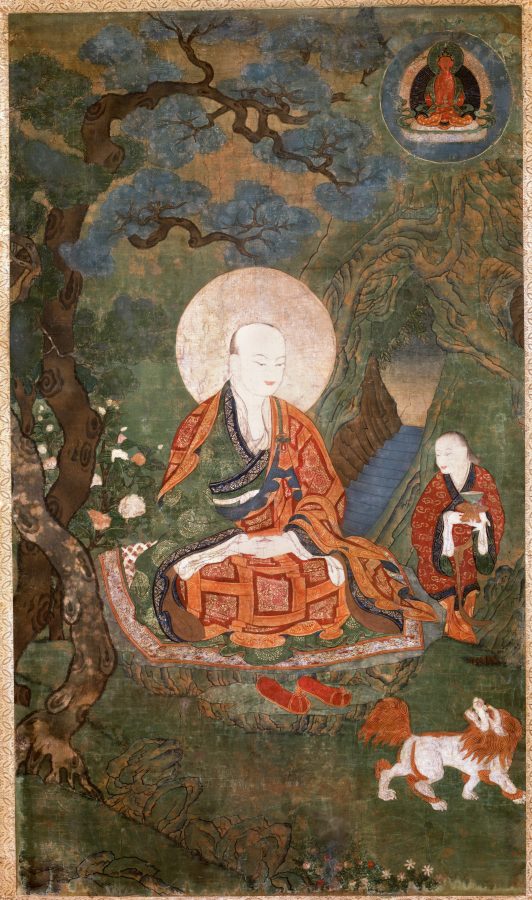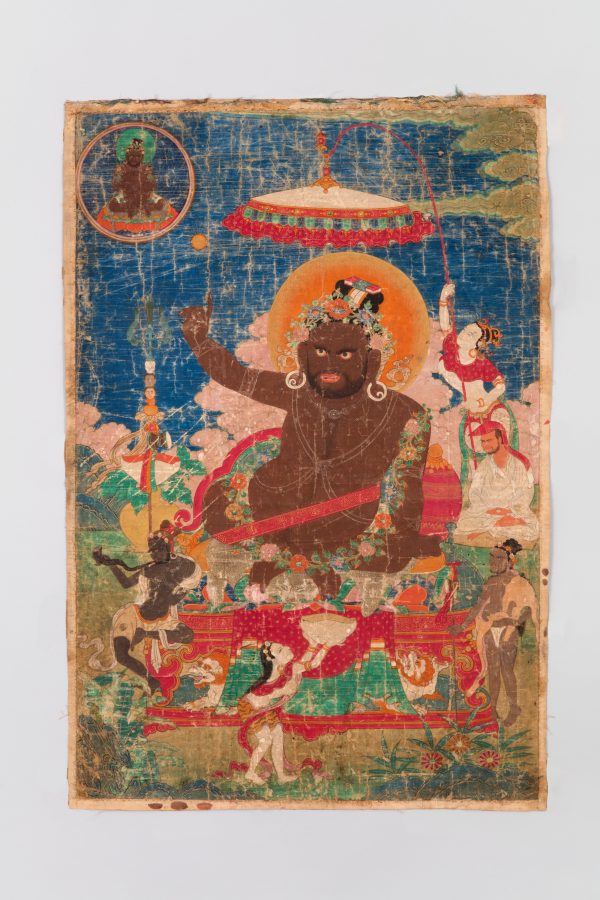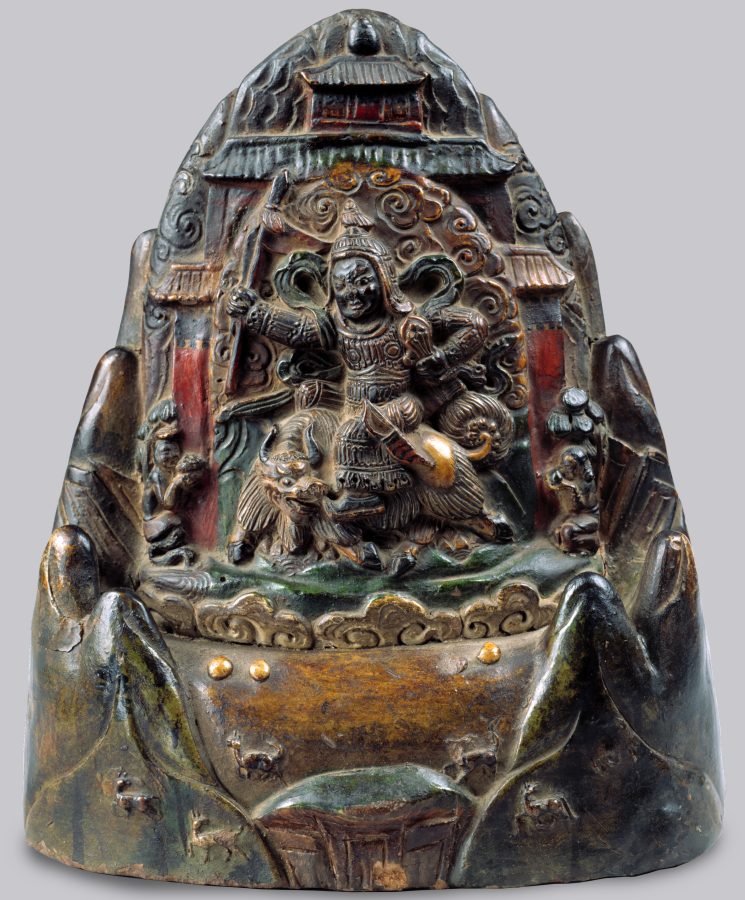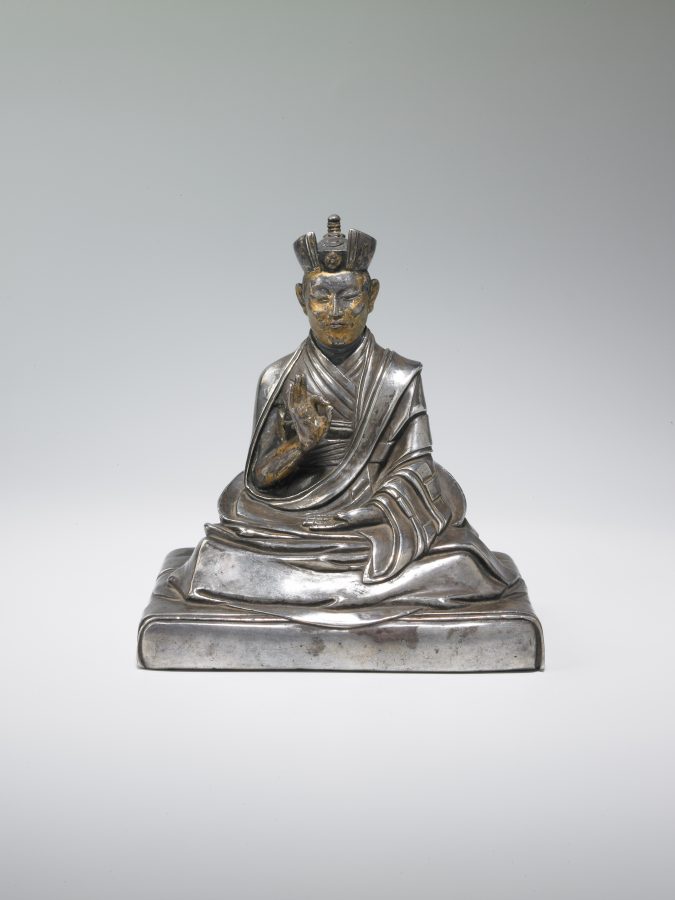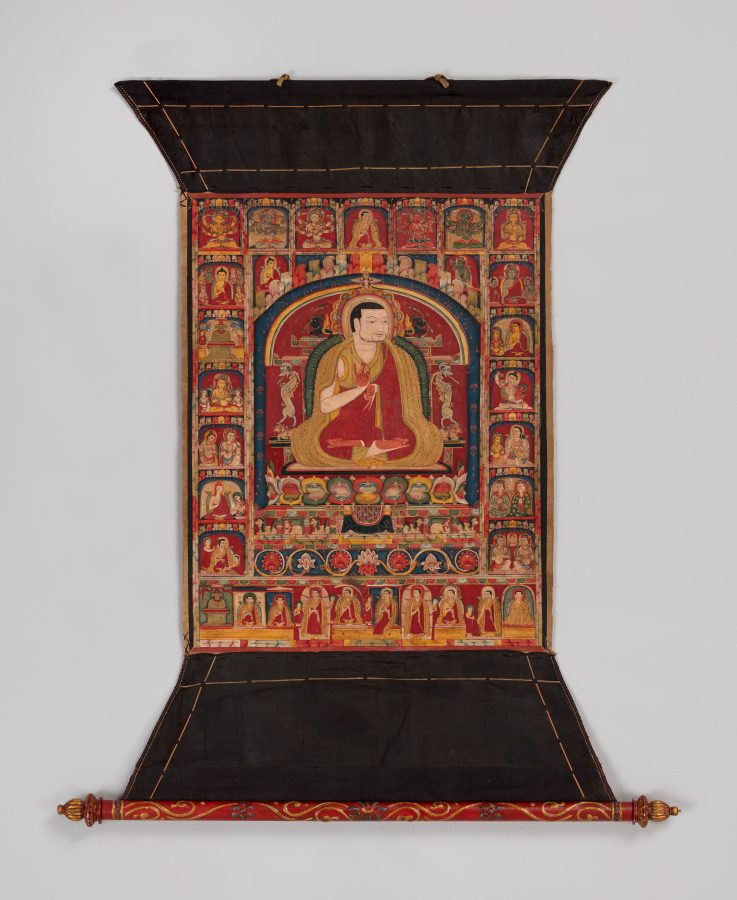Tsang Province, Central Tibet
second half of the 14th century
Rubin Museum of Himalayan Art
C2011.3
This detailed representation of the Buddha’s life is based on a composition derived from northeastern India. At the center of the painting is a depiction of the Buddha’s awakening, with Mara, a personification of evil, and Mara’s army attempting to stop the Buddha from reaching enlightenment. Other scenes from the Buddha’s life surround this central image. They are arranged chronologically starting in the top-right corner and moving in a clockwise direction.
This artwork features many other characteristics of early Tibetan painting with close links to Nepalese art found across the Himalayas during the fourteenth and fifteenth centuries. These characteristics include the central Buddha sitting under a three-lobed arch supported by lotus columns; rosettes represented above his ears; his cranial protuberance (ushnisha) topped by a flame-shaped jewel; the dominant red color; the black background to differentiate the scenes from his life; and yellow lines defining the main parts of the composition.
See full collection record
Learn about an earlier painting from Tsang following Nepalese conventions in a similar style and composition


